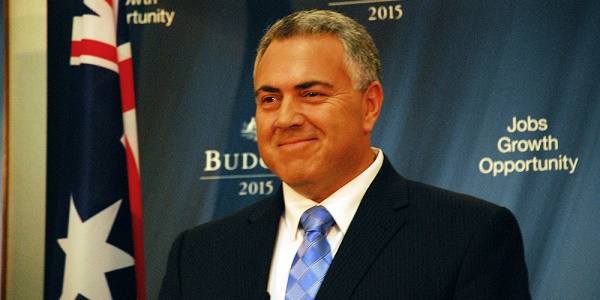Treasurer Joe Hockey will today lay the foundations of the Government’s strategy to deliver personal income tax cuts for low and middle-income earners.
The Economic Case for Personal Income Tax Cuts will put front and centre the proposed tax cuts as a re-election strategy. An options paper on tax reform, which will include the details of planned income tax cuts, will be put to voters before the next federal election.
Mr Hockey will today lay out the proposals in a speech to the Tax Institute, and Chartered Accountants Australia and New Zealand in Sydney. The Treasurer believes there is no other option as the current system is increasingly penalising low and middle-income earners. He estimates that if nothing is done to redress the balance, around 300,000 Australians will move into the next, higher tax bracket within two years simply due to inflation and rising wages.
“Many Australians are not fully aware that they will be paying higher taxes as a result of the stealthy rise of bracket creep,” he says. “For the worker out there on an average income, they might not notice it the first year. They might not even notice in the second or third year. But, eventually, it bites. We are now at that point.”
The plan to cut income tax will be used to apply further pressure on state governments to agree on a plan to increase revenue, after they failed to agree on the raising of GST to 15 per cent, as proposed by NSW Premier Mike Baird. However, on Friday the state treasurers did agree to expand GST to apply to all goods coming into Australia that are sold by foreign business. This measure will apply from 1 July 2017.
Shadow Treasurer Chris Bowen said that Mr Hockey’s plans for tax cuts were “all talk” and the Opposition would only be interested as and when the Treasurer was able to show how they would be funded.
“That’s exactly what was promised prior to the 2013 election,” Mr Bowen said. “If now the Treasurer is talking about new tax cuts, he needs to argue in the same breath for the GST increase or new spending cuts that will fund them.”
Read more at the Sydney Morning Herald.
Opinion: Bigger fix needed
While low and middle-income earners may welcome any tax cuts forthcoming, balancing nation’s budget cannot be achieved through measures aimed at appeasing voters come election time.
Mr Hockey will today announce that the government has no other choice than to stop low and middle-income earners being penalised by an unfair tax system, but it does. Time and time again the discussion on tax reform comes back to the overly generous superannuation tax concessions afforded to high earners.
Instead of being a means by which every Australian can successfully fund their own retirement, superannuation is fast becoming the greatest tax rort available to those earning hundreds of thousands of dollars each year.
Data from the ATO compiled for the Murray Financial System Inquiry released in 2014, shows that the top 10 per cent of income earners actually claim 38 per cent of government support provided by superannuation tax concessions. While the bottom 10 per cent of income earners are disadvantaged by paying the 15 per cent superannuation tax rate, as their marginal tax rate is in reality lower.
So while lowering the income tax levels for low and middle-income earners may give them a dollar to two extra in their pocket, they may be further disadvantaged by the superannuation tax concession. And all the while the rich are simply getting richer.
Piecemeal solutions to the tax system and government funding need to stop. If the Government is truly committed to strengthening of the economy, creating jobs and encouraging growth, then it must look at a fairer system for all.
Should lower and middle-income earners pay less tax? And if so, how should the revenue be replaced? Is it time for the government to bite the bullet and look at the whole tax system, not just a pre-election quick fix?

